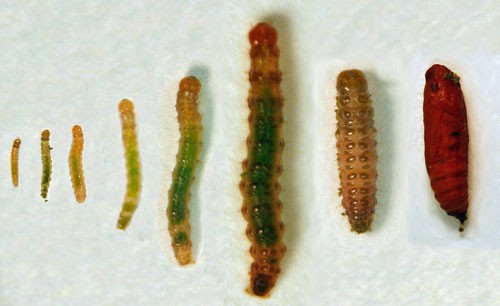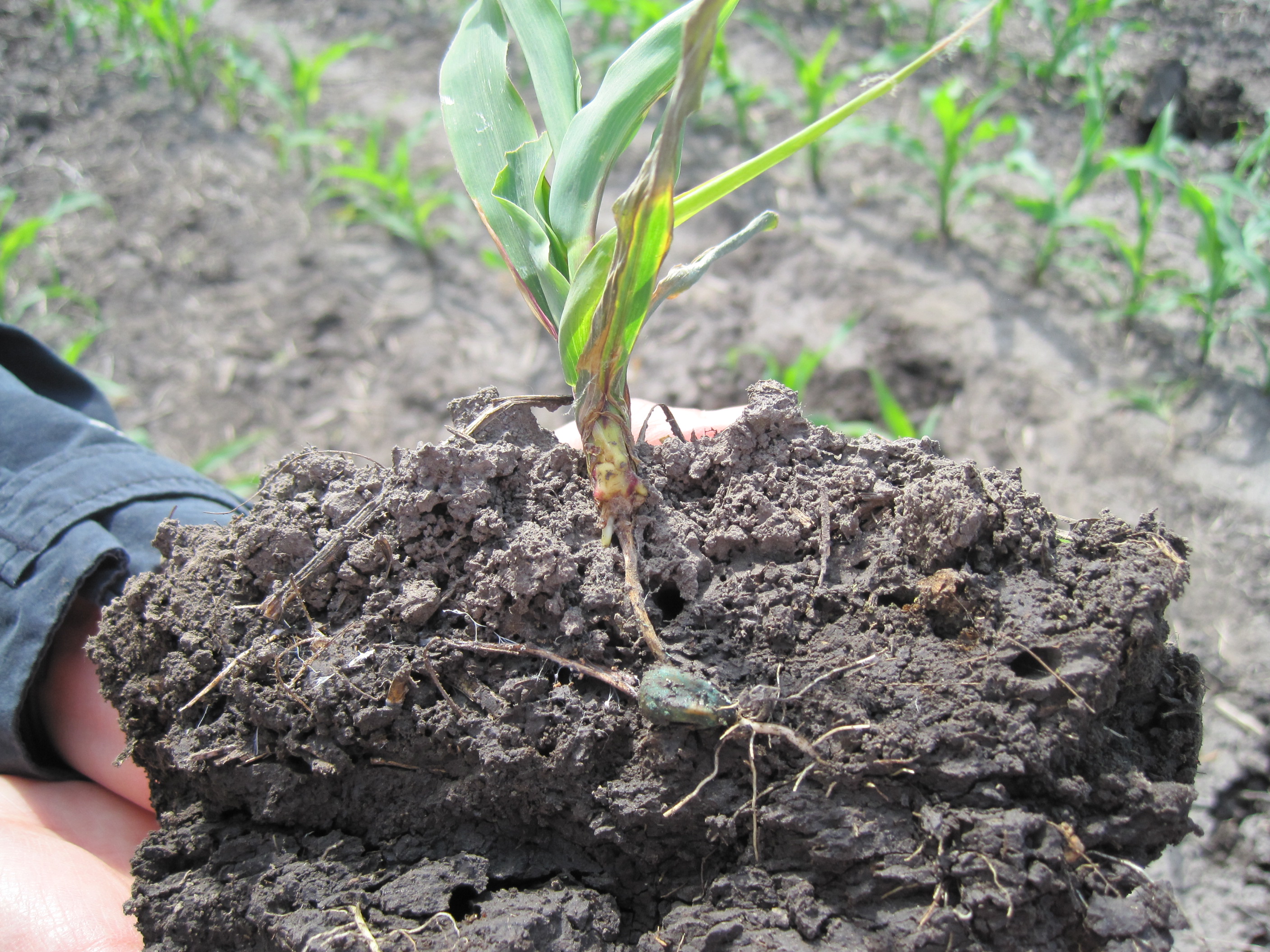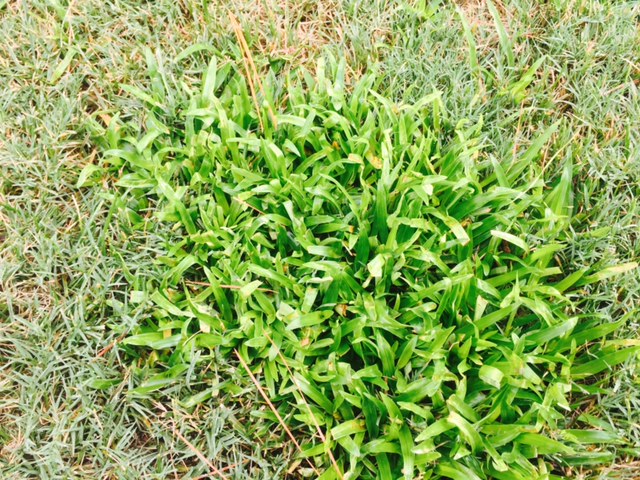Towards the end of last year I was often asked what our plan was for 2018: How can we help prevent Sod Webworm? How can we help prevent Brown Patch? How can we even out the roller coaster of Houston lawn-growing so that the grass looks green all season long?
I take lawn care personally and wanted to be able to provide better solutions, and preferably ones that didn’t leave me feeling like I had chem-bombed the Greater Houston area.

Taking the results from years of treatments, hours of online research, experiences and advice from other lawn technicians and the invaluable help and expertise of my family at Plants For All Seasons, we came up with the program below. It is designed to, over time, not just grow an attractive, green lawn, but also improve the soil and root system of your grass so that year on year your lawn will become healthier, more attractive, more self-sufficient and more resilient against pests, fungus, drought and flood.
8 Step Program:
-

I Heart Humates
Recovery: An organic recovery and conditioning treatment for your soil in early-mid February. I personally use a combination of soil activator, molasses and humates. This soil improvement is designed to help your grass recover from all the extremes of the last six months and prime it for the next step.
- Fertilize: We start in late February – early March, the first of five minimum applications. Following on from our recovery above we are suggesting a move to hybrid organic products (if you are currently on a chemical program.)
- Aeration and/or compost: If you haven’t aerated within at least a year, late March / April is a great time to do it. The compost (leaf mold is preferred) literally introduces organic material to your soil directly, hurrying along microbes and beneficial insects to the lawn party.
- Nematodes: It ain’t a party in South Texas until someone has roundworm*. These very gross sounding little beauties feed on the insides of pests like fleas, ants, ticks and (dramatic pause, drum roll please…) SOD WEBWORM!!! They preferably need to be applied before daily temperatures are above 90 degrees, but can survive up to two years if you follow the organic program.
- Fertilize again, and again, and again: Late April – May, Late June – July, Late August – September. The aim here is to keep the root system rich in the three essentials for a healthy lawn – nitrogen, phosphorous and potassium – whilst keeping the environment attractive to the beneficial microbes and insects that are going to help prevent the Legendary St. Augustine Fall Downfall.

Aerating a lawn improves drainage, air circulation and nutrient absorption
Aeration and/or compost: Echo, echo, echo… For the first year of this plan I do recommend twice a year, otherwise repeat the top dressing, even if it is just in problem areas and especially in places you regularly get Brown Patch or other fungal issues. If you did not aerate in Spring than Fall is another great time to do it and helps significantly with fungus prevention.
- Winterize: Late October – November. After a successful year growing a beautiful lawn and doing your organic bit to save the planet, put it to bed for the winter with the final fertilization of the year.
- Intervention: No good lawn treatment plan would be complete without solutions on hand to resolve any unexpected problems that might occur. Herbicides, insecticides and fungicides are the main three, others may include soil acidifiers, sand, sometimes it’s as simple as sprinkler alterations! Try to minimize the use of chemicals as much as possible – all the other steps are designed to let the grass fight its own battles – but be realistic about the occasional need for quick solutions or targeted chemical intervention.
Though I recommend aeration, compost and nematodes you could pick and choose between them if your wallet demands it, or if you are skeptical and need some pudding proof :-). As with any lawn fertilization and treatment program, the grass still needs to be watered and mown correctly to reap the full benefits (any good Lawn Treatment company should help you with this if you’re unsure what’s right for your lawn.)
The Price Of Going Green
I’ll be honest: with the move to hybrid organic fertilizers and addition of extra treatments, this is definitely an upgrade from the basic fertilization schedule we most commonly provide or the average DIY-er is doing. Though there are some very competitively priced organic products and providers out there, it is an increase. If cost is a problem, or you are simply not quite ready to jump on the organic bandwagon yet, there are a number of ways to implement various parts of the program into a chemical plan to test the green waters.

An Organic Plan means higher upfront costs, but less spent on treatment and water as the year’s pass.
On the flip side of that coin, if a beautiful lawn is a priority to you at any cost, then our best recommendation is to expand on step 8 (Intervention) and include monthly ‘check-ups’ so that the needs of your lawn can be monitored and met on a more regular basis. Whether hiring a company like ours or stepping outside yourself with a green thumb and a good soil tester, it gives the opportunity to head off problems sooner and accelerate the desired change as the Houston weather pendulum swings. Extras like weed control, organic pesticides, topsoil, sand, sprinkler alterations, soil acidifiers, additional humates and compost will all add to the program.
In (Honest) Conclusion:
I certainly still believe that a regular schedule of chemical fertilization can do wonders for a lawn – and in some treatment instances I believe chemicals are still the best option – but if the extremes of the past two years repeat, the chemical plans will likely require more regular intervention (as we experienced with Sod Webworm) whereas the move to organics will year-on-year need less.
None of this can guarantee you will not have some problems still (and if anyone tells you they can “guarantee” you that, then please send them my way to share their magical secrets!) but it is a continual improvement to the health of the lawn, making it far more resilient, suffer less and recover faster from the problems we face year on year.
* Please note that although the beneficial Nematodes we use in our treatment are a type of roundworm they are in no way harmful to yourself, your children or your pets. As an effective treatment against fleas, ticks, and ants they can actually make your entire landscape more animal and human-friendly. If you have questions check out the link above in the “Nematodes” step, or feel free to ask us!
Have questions about our new treatment recommendations? Message me below.




Hi Katy!
What will be the annual cost for your new line of treatment for our lawn this year? We are okay with spending a bit more to go with the more organic/green treatment program as long as it isn’t going to break our bank!
Our side yard (just inside the fence) where the neighbors’ pool builder was working last year, looks really bad — I think it may even need more soil to level it out then fresh sod. If you think that’s the case when you look at it, is that something you do or recommend a company? I also think it looks bad because of the sod webworm issue we had last year.
My final question is about the nematodes. Is that something that would be an issue for our dog? Would they attack him as well as the bad bugs they like to eat? Ringworms sound quite scary and are something we don’t want our dog to get!
Thanks for your help — and for answering our questions! Hope you’re having a great start to your new year!
Deneen
Hi Deneen,
Thank you for some great questions. Firstly – the nematodes are completely pet and human-friendly, even more so than our safest insecticides. They also help control fleas, ticks and ants, so can actually make your lawn safer for you and your dog!
I will email you an estimate for this plan that is specific to your lawn and includes a breakdown of each step. We can pick and choose if needs be and find the best solution for your yard and your bank 🙂 We can also add topsoil and sand to level and improve drainage – the organic plan will also help. I’ll take a look next time I’m in your neighborhood and let you know, it is likely we can roll that in with one of the other treatments to save some money.
Thanks,
Katy